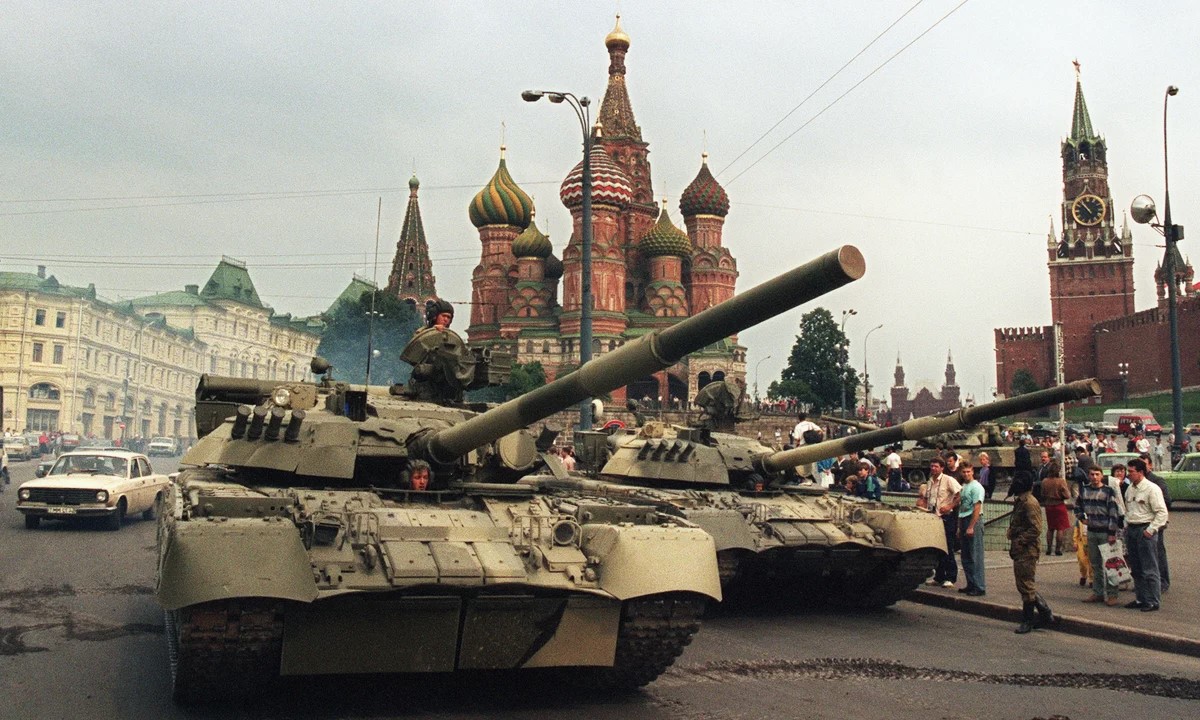
What was the Soviet Coup D'État Attempt? The Soviet Coup D'État Attempt, also known as the August Coup, happened in August 1991. A group of hardline members of the Soviet government tried to take control from Mikhail Gorbachev. They wanted to stop his reforms and preserve the Soviet Union. This event lasted three days and involved tanks in Moscow, a standoff at the Russian White House, and widespread protests. The coup failed because of the resistance led by Boris Yeltsin and the lack of support from the military. This failure accelerated the collapse of the Soviet Union, leading to its dissolution in December 1991.
Key Takeaways:
- The Soviet Coup D'État Attempt in 1991 led to the dissolution of the USSR. Boris Yeltsin's opposition, public resistance, and media played crucial roles in its failure.
- The failed coup accelerated the end of the Soviet Union, leading to the rise of Boris Yeltsin and the ban of the Communist Party in Russia. It marked the end of the Cold War era.
The Soviet Coup D'État Attempt: An Overview
The Soviet Coup D'État Attempt, also known as the August Coup, was a significant event in 1991 that aimed to take control of the Soviet government from Mikhail Gorbachev. This attempt was a pivotal moment in Soviet history, leading to the eventual dissolution of the USSR. Here are some intriguing facts about this historical event.
- The coup took place from August 19 to August 21, 1991.
- It was orchestrated by members of the Soviet government, including the KGB and military officials.
- The coup leaders formed the State Committee on the State of Emergency (GKChP).
- Mikhail Gorbachev was placed under house arrest at his vacation home in Crimea.
- The coup leaders announced that Gorbachev was ill and unable to perform his duties.
- Boris Yeltsin, then President of the Russian Soviet Federative Socialist Republic, opposed the coup.
- Yeltsin famously stood on a tank outside the Russian White House to rally support against the coup.
- The coup leaders imposed a state of emergency and attempted to control the media.
- Despite their efforts, many media outlets continued to broadcast anti-coup messages.
- The coup faced significant resistance from the public and various government officials.
Key Figures and Their Roles
Understanding the key figures involved in the coup provides insight into the motivations and actions taken during this tumultuous period.
- Gennady Yanayev, Vice President of the Soviet Union, declared himself acting president during the coup.
- Dmitry Yazov, the Soviet Defense Minister, played a crucial role in mobilizing military forces.
- Vladimir Kryuchkov, head of the KGB, was one of the main architects of the coup.
- Boris Pugo, the Interior Minister, supported the coup and later committed suicide after its failure.
- Anatoly Lukyanov, Chairman of the Supreme Soviet, was also implicated in the coup attempt.
- Alexander Tizyakov, President of the Association of State Enterprises, was a member of the GKChP.
- Vasily Starodubtsev, Chairman of the Peasant Union, supported the coup leaders.
- Valentin Pavlov, the Soviet Prime Minister, was another key figure in the coup.
Public Reaction and Resistance
The public's reaction played a crucial role in the outcome of the coup. Widespread resistance and protests were instrumental in its failure.
- Thousands of people gathered outside the Russian White House to support Yeltsin.
- Citizens formed human chains to block military vehicles from advancing.
- Many soldiers refused to follow orders to attack civilians.
- The coup leaders underestimated the public's support for Gorbachev and Yeltsin.
- The media played a significant role in mobilizing public opinion against the coup.
- International leaders, including U.S. President George H.W. Bush, condemned the coup.
The Aftermath and Consequences
The failure of the coup had far-reaching consequences for the Soviet Union and the world.
- Gorbachev was released from house arrest and returned to Moscow on August 22, 1991.
- The coup's failure accelerated the dissolution of the Soviet Union.
- By December 1991, the Soviet Union had officially dissolved.
- Boris Yeltsin emerged as a key political figure and later became the first President of the Russian Federation.
- The Communist Party of the Soviet Union was banned in Russia following the coup.
- The event marked the end of the Cold War and the beginning of a new era in global politics.
The Lasting Impact of the Soviet Coup D'État Attempt
The Soviet Coup D'État Attempt of 1991 left a mark on history. It signaled the end of the Soviet Union and the Cold War. The coup's failure showed the power of the people and their desire for change. Leaders like Boris Yeltsin emerged as heroes, while the Communist Party's grip weakened. This event reshaped global politics, leading to the rise of new nations and alliances. The world saw the importance of democracy and the dangers of authoritarianism. The coup's legacy reminds us of the value of freedom and the resilience of those who fight for it. Understanding these facts helps us appreciate the complexities of history and the courage of individuals who stand against oppression.
Frequently Asked Questions
Was this page helpful?
Our commitment to delivering trustworthy and engaging content is at the heart of what we do. Each fact on our site is contributed by real users like you, bringing a wealth of diverse insights and information. To ensure the highest standards of accuracy and reliability, our dedicated editors meticulously review each submission. This process guarantees that the facts we share are not only fascinating but also credible. Trust in our commitment to quality and authenticity as you explore and learn with us.
